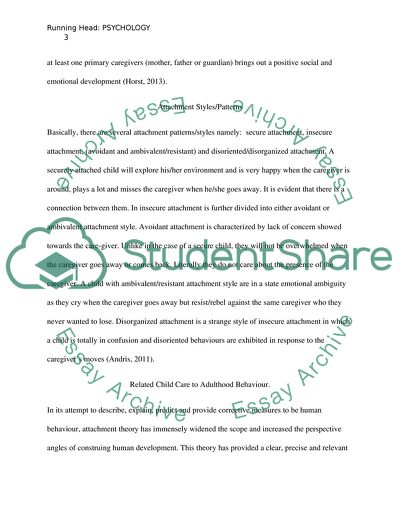Cite this document
(The Contributions of Attachment Theory to Understanding of Human Development Essay Example | Topics and Well Written Essays - 1250 words, n.d.)
The Contributions of Attachment Theory to Understanding of Human Development Essay Example | Topics and Well Written Essays - 1250 words. https://studentshare.org/psychology/1854842-evaluate-the-contributions-of-attachment-theory-to-our-understanding-of-human-development
The Contributions of Attachment Theory to Understanding of Human Development Essay Example | Topics and Well Written Essays - 1250 words. https://studentshare.org/psychology/1854842-evaluate-the-contributions-of-attachment-theory-to-our-understanding-of-human-development
(The Contributions of Attachment Theory to Understanding of Human Development Essay Example | Topics and Well Written Essays - 1250 Words)
The Contributions of Attachment Theory to Understanding of Human Development Essay Example | Topics and Well Written Essays - 1250 Words. https://studentshare.org/psychology/1854842-evaluate-the-contributions-of-attachment-theory-to-our-understanding-of-human-development.
The Contributions of Attachment Theory to Understanding of Human Development Essay Example | Topics and Well Written Essays - 1250 Words. https://studentshare.org/psychology/1854842-evaluate-the-contributions-of-attachment-theory-to-our-understanding-of-human-development.
“The Contributions of Attachment Theory to Understanding of Human Development Essay Example | Topics and Well Written Essays - 1250 Words”. https://studentshare.org/psychology/1854842-evaluate-the-contributions-of-attachment-theory-to-our-understanding-of-human-development.


